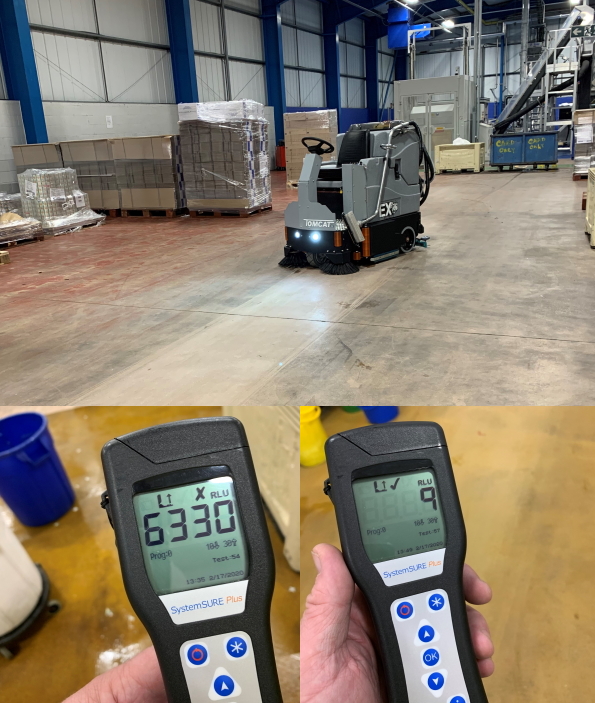Do floors matter ?
Maintaining hygienic conditions in the food industry is essential, the risk of contamination from undesirable bacteria & viruses is high & the results of ineffective housekeeping could be devastating for both the health of the consumer & the reputation of the supplier.
The cleanliness of floors is often a secondary consideration when it comes to hygiene in the work place, this short video clip illustrates some of the ways in which harmful bacteria & viruses could be unintentionally transmitted through a facility.
Clean before you sanitise
Cleaning and sanitising (disinfecting) floors are two separate processes, effective cleaning must occur before sanitising, sanitisers will not work as well if the floor has not had all visible contamination removed.
Effective floor cleaning is achieved with detergent, water and agitation best achieved with a good quality scrubber dryer, the visible dirt and detergent is then removed by the machine. Detergents are chemicals that remove dirt and grease; however most detergents do not kill bacteria and other microorganisms, these may be reduced during the cleaning process, however cleaning is not intended to destroy microorganisms, sanitising is required for this purpose.
This floor was cleaned with a premium quality scrubber dryer using an on board aqueous ozone system, the floor surface was tested before & after cleaning which resulted in a pass. The scoring system is as follows: 0 -11 RLU the item is considered clean, 12 – 30 RLU the item is acceptable but requires cleaning – anything above 30 RLU is a fail and the larger the reading the larger the contamination.
ATP (Adenosine Triphosphate) hygiene monitoring systems can measure the levels of bioburden in the environment, an ideal way to evidence the levels of cleanliness. The meter uses a process which monitors levels of ATP Bioluminescence (ATP = Adenosine Triphosphate which is the universal energy carrier in all living things)
Now Sanitise
Sanitising hard surfaces successfully will involve contact time, most chemicals that kill bacteria & viruses will give a minimum time that they should be left on a surface to work at their most effective. On a floor this would mean leaving a the solution on the floor to dry naturally, or picked up with a scrubber dryer when the time has lapsed.
For information on floor sanitising equipment please Click Here


A good blog providing all the steps required to follow while cleaning the floor.